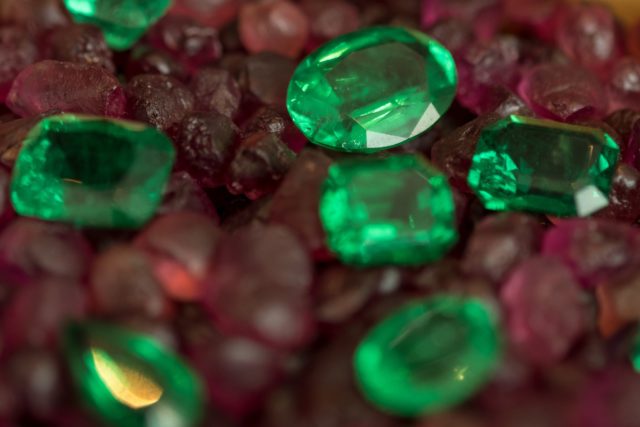By Victoria Gomelsky
In 1990, while Vladyslav Y. Yavorskyy was a geology student at the University of Odessa, he visited his first emerald mine, the Malysheva deposit in Russia’s Ural Mountains.
“I got there and began to dig with a hammer,” he recalled. “You spend one week on a mine, you get a half pocket of emeralds. I never managed to get anything clean, to selling standard. But the color was fantastic.”
Today, the Bangkok-based gem dealer and author of “Gemstones: Terra Connoisseur” is infatuated with emeralds from another, very different, locality: a two-year-old mine in southern Ethiopia, near the trading town of Shakiso.
He said the color of the bright green gems from East Africa rivals that of stones from Colombia, the traditional source of top-quality emeralds.
He is not alone in his assessment.
There has been a lot of excitement among international gem dealers about the discovery, particularly because many of the Ethiopian stones do not require oil, a traditional form of clarity enhancement.
Mr. Yavorskyy said, “The best Ethiopian stone I have is a 10-carater, and it’s like the best Malysheva emerald — so beautiful.”
And, he added, “You look at the crystal and you see big money inside.”
The interview was edited and condensed.
When did you first hear about the Ethiopian emerald discovery?
In 2016, the first material came out at the Tucson gem shows. There were bigger crystals but not clean, not good for faceting. One year later, we started to get a lot of stuff in Bangkok, the most open market on the planet.
What’s your impression of the gemstones?
The first stone I got over 10 carats was a spinach color, really pure green. There are a lot of lighter ones — most of the production is lighter, like any other mine — and mostly below 5 carats, but the quality of the material is exceptional. Plus, it’s natural. And you don’t pay millions. If you’re talking a 10-carat super Colombian, it’s a million-dollar stone and never available. And here, you open your palm and you put this stone in your palm, you enjoy it, and you don’t spend as much as your house cost to buy it.
How do you think the Ethiopian discovery will impact the Colombian emerald market?
It has nothing to do with the Colombian market at all. Chinese demand is too strong for Colombian emeralds to be challenged by Ethiopian or anybody else. And the market for Colombian is giant, like Manhattan versus a small town in Belarus.
What are you planning to do with the Ethiopian stones?
For now, I will buy and cut as much as possible. Since I first bought it six months ago, the price already doubled. If I sit on it for another year, the price will double and without any efforts, I can sell it and make money.

























